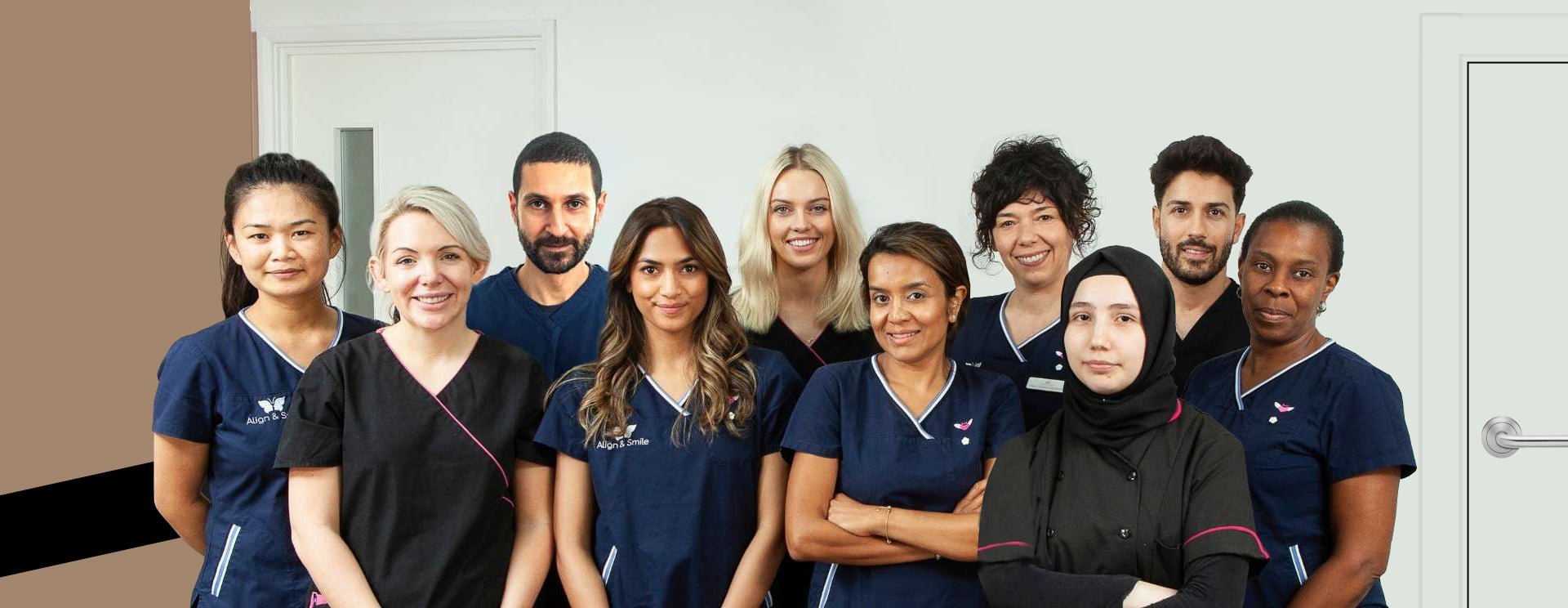When you walk through the dental section of your supermarket or pharmacy, you may come across devices that are highly technical and look like they belong in dental surgeries. The most commonly seen and bought options include ultrasonic devices and water-flossers.
Ultrasonic cleaners are devices that use high-frequency sound waves to clean dental appliances, such as dentures, retainers, and mouthguards. They can also be used to clean braces and bridges too, meaning they are versatile and worth investing in if you have any of these fittings.
Why? Because they can effectively remove bacteria, plaque, and other debris from these dental appliances and help maintain good oral hygiene. However, it’s essential to use these devices correctly to avoid damaging your dental appliances or injuring your mouth.
When you come to Align and Smile, our dentist in Canary Wharf will always advise you on how to keep any appliances in the best condition, and we will also be glad to show you how to use an ultrasonic cleaner at home for the best results with a brace or aligner.
So, here are 5 tips from our dentist in Canary Wharf for our patients on using ultrasonic cleaners at home, specifically, on how to use them to clean braces, aligners, bridges, and dentures.
Read the instructions
Before using an ultrasonic cleaner, it’s essential to read the instructions carefully. Different devices may have different settings and requirements, and it’s crucial to understand how to use your specific device. Be sure to read and follow the manufacturer’s instructions and any safety precautions.
Clean devices thoroughly
Before placing your dental appliance in the ultrasonic cleaner or using the cleaner to get into the crevices of the appliance, it’s important to clean it thoroughly first. Rinse your denture or brace with warm water and use a soft-bristled toothbrush and mild soap to remove any visible debris. This will help the ultrasonic cleaner to effectively remove any remaining bacteria or plaque.
Use appropriate cleaning solutions
Most ultrasonic cleaners require a cleaning solution to be added to the water to enhance the cleaning process. However, not all cleaning solutions are appropriate for all dental appliances. For example, denture cleaning tablets are designed specifically for dentures and may not be suitable for other devices. Check the manufacturer’s instructions or consult our dentist in Canary Wharf to ensure that you are using an appropriate cleaning solution.
Do not overload the device
It’s important not to overload the ultrasonic cleaner with too many dental appliances. Overloading the device can reduce its effectiveness and may even damage the device or the appliances. Follow the manufacturer’s instructions for the maximum number of appliances that can be placed in the device at one time.
Rinse and dry appliances thoroughly
After using the ultrasonic cleaner, rinse your dental appliances thoroughly with warm water to remove any remaining cleaning solution or debris. Then, use a clean and soft cloth to dry the appliances completely before using them again. Moisture can promote bacterial growth and can cause damage to some dental appliances, so be sure to keep them dry!


